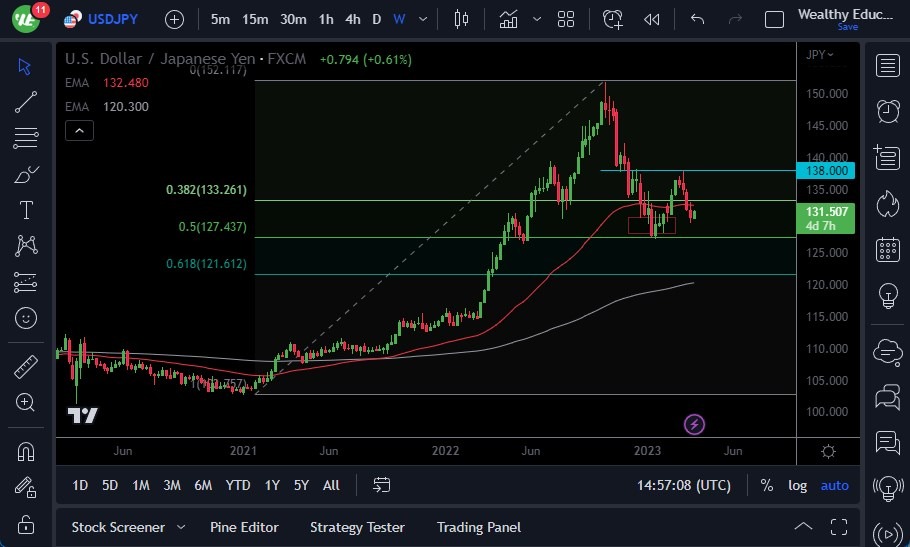The USD/JPY rallied significantly during Monday's trading session, driven by an 11 basis points rally in the 2-year yield. The interest rate differential between the US dollar and the Japanese yen has played a significant role in this rally, as the Bank of Japan continues to keep its yield curve control policy intact, which means they must print more Japanese yen to buy bonds and keep rates low.
On Friday, the ¥130 level offered significant support, and the market is paying close attention to big figures, particularly as Friday's candlestick formed a hammer. Above this level, significant resistance is present near the ¥132.50 and ¥133.50 levels, where the 50-Day EMA currently resides. The moving averages are starting to drop, and it will be interesting to see if this has a significant impact on the market.
Expect Volatility in the Market
- The ¥127.50 level has offered significant support, and a double bottom has formed, indicating that the market is still bullish.
- However, if the market breaks down below this level, it could trigger significant selling. In fact, it could open up a multi-handle move, but that does not seem like something that will easily happen anytime soon.
- The bond market continues to cause far too much noise for any move to simply take off significantly.
Investors should expect volatility in the market, and a "buy on the dip" mentality is likely to persist. While there are uncertainties in the market, the US dollar is expected to remain bullish against the yen, given the interest rate differential and the Bank of Japan's yield curve control policy. Keep in mind that they are trying to keep the 10-year yield on the JGB down to 50 basis points or less. By doing so, they may have to print more currency, which floods the market with supply.
Overall, investors should monitor key support and resistance levels, including the ¥130, ¥132.50, and ¥133.50 levels. The market is likely to be volatile, so it is essential to keep an eye on market developments and key indicators, which of course most important would be the interest rate situation as the Bank of Japan and its yield curve control program continues to be a major driver of what happens with the Japanese yen against all currencies, not just the US dollar.

Ready to trade our daily Forex analysis? We’ve made a list of the best Forex brokers worth trading with.

